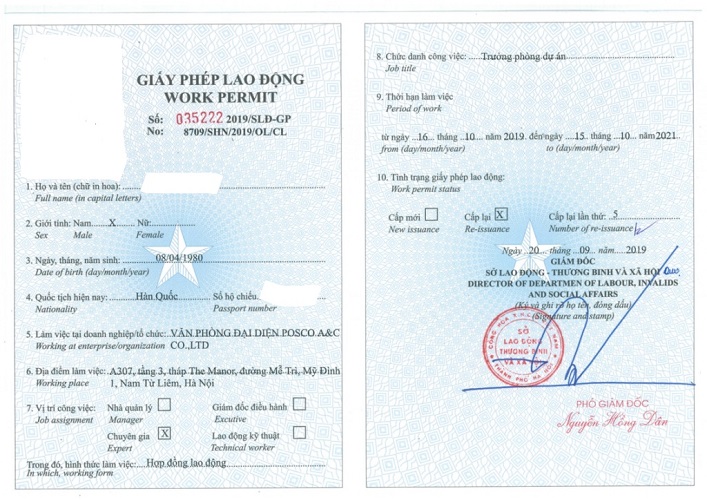Why you should invest in tourism in Vietnam
In recent years, Vietnam’s tourism has grown rapidly. Over the past decade, Vietnam has emerged as one of Southeast Asia’s fastest-growing destinations. The number of international visitors to Vietnam has increased from 4.2 million in 2008 to 15.5 million in 2018, up 269% in 10 years according to statistics from the Vietnam National Administration of Tourism.
Domestic tourism has also risen sharply, with domestic arrivals rising from 20.5 million in 2008 to 80 million in 2018. Total revenue from tourism increased from $2.7 billion in 2008 to $7.5 billion in 2018. This growth trend is expected to continue, with Vietnam forecast to welcome 17-20 million international visitors and 82 million domestic visitors by 2020.
There are several compelling factors that make Vietnam an attractive tourist investment destination:
Vietnam has many rich experiences for visitors
From bustling cities like Hanoi, Ho Chi Minh City and Da Nang to famous landmarks like Ha Long Bay, Sa Pa and Phong Nha – Ke Bang National Park, Vietnam has a wide range of experiences to suit all types of guests. The long coastline with clear blue beaches, irrigation plain scenery in the North and rich cultural and historical attractions attract those interested in Vietnam’s feudal history.
Vietnamese cuisine and coffee culture attract tourists
Vietnamese cuisine is considered one of Asia’s top culinary experiences. Delicate and bold dishes such as pho, bread and salad rolls have resonated worldwide. Vietnam is also one of the leading coffee producing countries, with the local coffee culture being a highlight for visitors. Food and coffee tours are increasingly popular.
Lower cost compared to neighboring countries
Compared to other popular destinations in Asia such as Thailand, Malaysia, and Singapore, travel costs in Vietnam are relatively affordable. The cost of accommodation, travel, meals can be 25-50% cheaper. For tourists with limited budgets, lower costs make Vietnam more attractive. Investors can take advantage of the demand for cheap accommodation and travel experiences.
Economic growth and political stability
Vietnam has maintained a GDP growth rate of over 5% over the past decade. The middle class is expanding rapidly with higher disposable income leading to more spending on travel and entertainment. The stable political environment also brings confidence to investors in the tourism sector.
Improving aviation and infrastructure
Major cities such as Hanoi, Ho Chi Minh City and Da Nang have upgraded their airport infrastructure to accommodate the rising number of passengers. Vietnam’s transport infrastructure has also improved, making many destinations more accessible. The rise of low-cost airlines like Vietjet has made domestic travel more affordable. These improvements create opportunities for tourism investment beyond traditional locations.
Young population wishing to travel
More than 70% of Vietnam’s population is under 35 years old. This tech- and social-media-savvy younger generation tends to discover unique travel experiences. In addition, the emerging middle class in Vietnam has higher disposable income and a desire to explore the country. This younger generation represents a growing audience of travelers.
The most attractive investment opportunity
Some of the most promising investment sectors in Vietnam’s tourism include:
- Street food and coffee tours;
- Companies organize walking, cycling, kayaking tours;
- Tour to experience Vietnamese culture, cuisine and nature;
- Development of new destinations and points to distribute visitors across the country;
- Cheap and budget guesthouses and hotels in addition to the main tourist destinations;
- Boutique and luxury hotels in Hanoi, Ho Chi Minh, Da Nang;
- Homestay and motel in remote areas such as Sa Pa, Ha Giang;
- Travel startups focus on online tour booking platform technology.
Vietnam’s tourism still has a lot of potential for development. Despite the impressive growth in visitor arrivals, Vietnam’s tourism industry has yet to reach its full potential. Currently, tourism accounts for 9% of the national GDP. The government aims to reach 10% by 2025. There is still plenty of room for tourism investment to help Vietnam achieve its goals and become a leading destination in the region.
For investors, the growing interest of domestic and international visitors to Vietnam presents a strategic opportunity. By embracing the rapidly growing market from the start, there is great potential to capitalize on Vietnam’s rise as the next most popular travel destination in Asia. The positive potential outweighs any potential risk. Now is an ideal time for future investors and entrepreneurs to put capital into Vietnam’s burgeoning tourism industry.
About us: Siglaw Law Firm
Head office in Hanoi: 12A floor, Sao Mai Building, No. 19 Le Van Luong Street, Nhan Chinh Ward, Thanh Xuan District, Hanoi City.
Email: vphn@siglaw.com.vn
Southern branch: No.103 – 105 Nguyen Dinh Chieu Str., Xuan Hoa Ward, Ho Chi Minh.
Central Branch: 177 Trung Nu Vuong, Hai Chau District, Da Nang City
Email: vphcm@siglaw.com.vn
Hotline: 0961 366 238
Facebook: https://www.facebook.com/hangluatSiglaw









